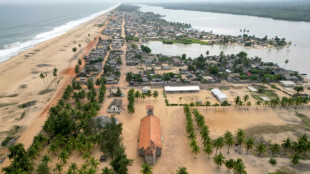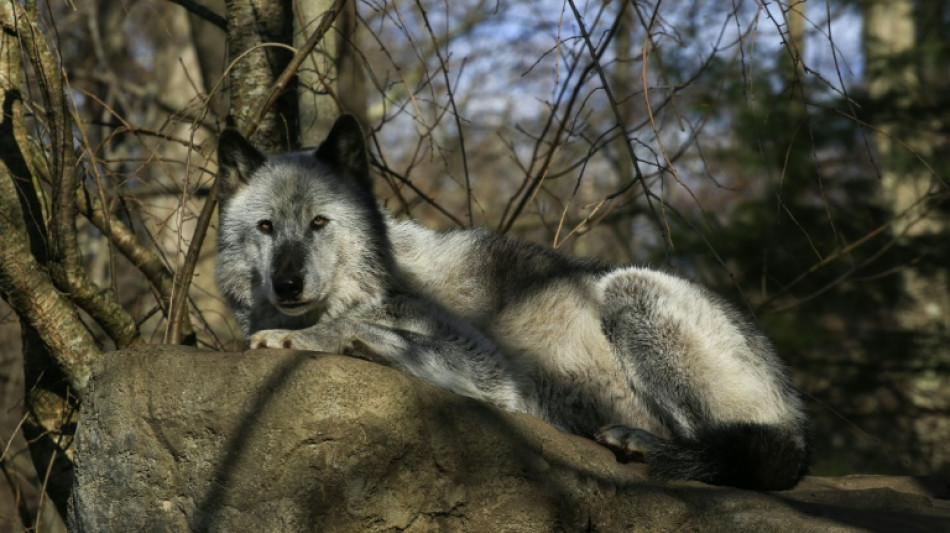
-
 Drought, dams and diplomacy: Afghanistan's water crisis goes regional
Drought, dams and diplomacy: Afghanistan's water crisis goes regional
-
'Pickypockets!' vigilante pairs with social media on London streets

-
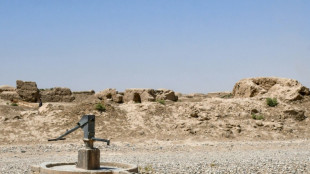 From drought to floods, water extremes drive displacement in Afghanistan
From drought to floods, water extremes drive displacement in Afghanistan
-
Air Canada flights grounded as government intervenes in strike

-
 Women bear brunt of Afghanistan's water scarcity
Women bear brunt of Afghanistan's water scarcity
-
Reserve Messi scores in Miami win while Son gets first MLS win

-
 Japan's Iwai grabs lead at LPGA Portland Classic
Japan's Iwai grabs lead at LPGA Portland Classic
-
Trump gives Putin 'peace letter' from wife Melania

-
 Alcaraz to face defending champ Sinner in Cincinnati ATP final
Alcaraz to face defending champ Sinner in Cincinnati ATP final
-
Former pro-democracy Hong Kong lawmaker granted asylum in Australia

-
 All Blacks beat Argentina 41-24 to reclaim top world rank
All Blacks beat Argentina 41-24 to reclaim top world rank
-
Monster birdie gives heckled MacIntyre four-stroke BMW lead

-
 Coffee-lover Atmane felt the buzz from Cincinnati breakthrough
Coffee-lover Atmane felt the buzz from Cincinnati breakthrough
-
Coffe-lover Atmane felt the buzz from Cincinnati breakthrough

-
 Monster birdie gives MacIntyre four-stroke BMW lead
Monster birdie gives MacIntyre four-stroke BMW lead
-
Hurricane Erin intensifies offshore, lashes Caribbean with rain

-
 Kane lauds Diaz's 'perfect start' at Bayern
Kane lauds Diaz's 'perfect start' at Bayern
-
Clashes erupt in several Serbian cities in fifth night of unrest

-
 US suspends visas for Gazans after far-right influencer posts
US suspends visas for Gazans after far-right influencer posts
-
Defending champ Sinner subdues Atmane to reach Cincinnati ATP final

-
 Nigeria arrests leaders of terror group accused of 2022 jailbreak
Nigeria arrests leaders of terror group accused of 2022 jailbreak
-
Kane and Diaz strike as Bayern beat Stuttgart in German Super Cup

-
 Australia coach Schmidt hails 'great bunch of young men'
Australia coach Schmidt hails 'great bunch of young men'
-
Brentford splash club-record fee on Ouattara

-
 Barcelona open Liga title defence strolling past nine-man Mallorca
Barcelona open Liga title defence strolling past nine-man Mallorca
-
Pogba watches as Monaco start Ligue 1 season with a win

-
 Canada moves to halt strike as hundreds of flights grounded
Canada moves to halt strike as hundreds of flights grounded
-
Forest seal swoop for Ipswich's Hutchinson

-
 Haaland fires Man City to opening win at Wolves
Haaland fires Man City to opening win at Wolves
-
Brazil's Bolsonaro leaves house arrest for medical exams

-
 Mikautadze gets Lyon off to winning start in Ligue 1 at Lens
Mikautadze gets Lyon off to winning start in Ligue 1 at Lens
-
Fires keep burning in western Spain as army is deployed
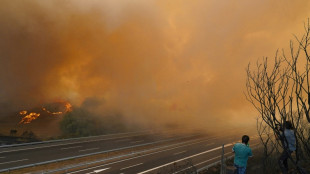
-
 Captain Wilson scores twice as Australia stun South Africa
Captain Wilson scores twice as Australia stun South Africa
-
Thompson eclipses Lyles and Hodgkinson makes stellar comeback

-
 Spurs get Frank off to flier, Sunderland win on Premier League return
Spurs get Frank off to flier, Sunderland win on Premier League return
-
Europeans try to stay on the board after Ukraine summit

-
 Richarlison stars as Spurs boss Frank seals first win
Richarlison stars as Spurs boss Frank seals first win
-
Hurricane Erin intensifies to 'catastrophic' category 5 storm in Caribbean
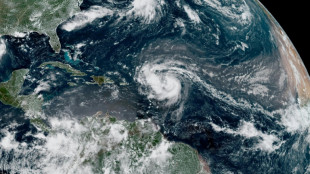
-
 Thompson beats Lyles in first 100m head-to-head since Paris Olympics
Thompson beats Lyles in first 100m head-to-head since Paris Olympics
-
Brazil's Bolsonaro leaves house arrest for court-approved medical exams

-
 Hodgkinson in sparkling track return one year after Olympic 800m gold
Hodgkinson in sparkling track return one year after Olympic 800m gold
-
Air Canada grounds hundreds of flights over cabin crew strike

-
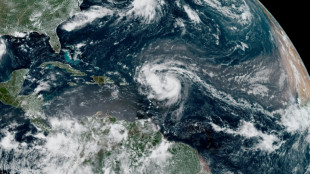 Hurricane Erin intensifies to category 4 storm as it nears Caribbean
Hurricane Erin intensifies to category 4 storm as it nears Caribbean
-
Championship leader Marc Marquez wins sprint at Austrian MotoGP

-
 Newcastle held by 10-man Villa after Konsa sees red
Newcastle held by 10-man Villa after Konsa sees red
-
Semenyo says alleged racist abuse at Liverpool 'will stay with me forever'

-
 In high-stakes summit, Trump, not Putin, budges
In high-stakes summit, Trump, not Putin, budges
-
Pakistan rescuers recover bodies after monsoon rains kill 340

-
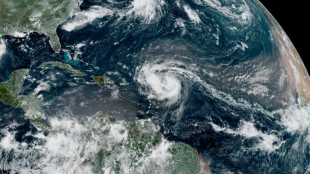 Hurricane Erin intensifies to category 3 storm as it nears Caribbean
Hurricane Erin intensifies to category 3 storm as it nears Caribbean
-
Ukrainians see 'nothing' good from Trump-Putin meeting


How bringing back lost species revives ecosystems
Scientists often study the grim impacts of losing wildlife to hunting, habitat destruction and climate change. But what happens when endangered animals are brought back from the brink?
Research has shown restoring so-called "keystone" species -- those with an outsized impact on their environment -- is vital for the health of ecosystems, and can come with unexpected benefits for humans.
Here are some notable examples from North America.
- Wolves -
Few species evoke the American wild as much as wolves.
Though revered by Indigenous communities, European colonists who arrived in the 1600s embarked on widespread extermination campaigns through hunting and trapping.
By the mid-20th century, fewer than a thousand gray wolves were left in the continental United States, down from at least a quarter million before colonization.
Extinction was averted in the 1970s when lawmakers passed the Endangered Species Act, helping revive the apex predator in parts of its former range.
Then, in the mid-1990s, the government took wolves from Canada and reintroduced them to Yellowstone National Park.
This generated a wealth of data that scientists are still working to understand.
The new arrivals kept elk numbers down, preventing them from over-browsing vegetation that provides material for birds to build nests and beavers to build dams -- a phenomenon known as a trophic cascade.
The recovered vegetation helped stop soil erosion into rivers, changing their course by reducing meandering.
While building their dams, the beavers also create deep ponds that juvenile fish and frogs need to survive.
When they embark on hunts, wolves focus on weak and diseased prey, ensuring survival of the fittest.
A recent paper even found that wolves brought back in the midwestern state of Wisconsin kept deer away from roads, reducing collisions with cars.
Amaroq Weiss, a biologist and senior wolf advocate for the Center for Biological Diversity compared ecosystems to tapestries, "and when we take out some of the threads, we weaken that tapestry," she told AFP.
It's thought there are now more than 6,000 gray wolves in the US. The main threat is legalized hunting in some states.
- Buffalo -
The story of the American buffalo -- also known as bison -- is inextricably linked to the dark history of the early United States.
From an estimated 30 million, their number plummeted to just hundreds by the late 19th century as the US government sought to wipe out plains tribe Indians whose way of life depended on the animal.
"It was an intentional genocide to remove the buffalo, to the remove the Indians and force them onto reservations," Cody Considine of The Nature Conservancy (TNC) told AFP.
Buffalo, he explained, are an integral part of TNC's efforts to re-establish prairies in the Nachusa Grasslands of Illinois.
The buffalo, who were introduced there in 2014 and now number around a hundred, favor eating grass over flowering plants and legumes, which in turn allows a variety of birds, insects and amphibians to flourish.
"Some of these species without that grazing simply just disappear off the landscape due to the high competition of the grasses," added Considine.
As they forage, bisons' hooves kick up and aerate the soil, further aiding in plant growth as well as seed dispersion.
TNC currently manages some 6,500 buffalo, and is creating a pilot program with tribal partners that involves transferring excess animals to Indigenous communities, as part of broader efforts to revive America's national mammal.
Some 20,000 buffalo are now thought to roam in "conservation herds," though none are truly free roaming, added Considine.
- Sea otters -
As the dominant predator of marine nearshore environments, sea otters play a hugely important role in their ecosystem.
Historically they spanned from Baja California up the West Coast up to Alaska, Russia and northern Japan, but hunting in the 1700s and 1800s decimated their numbers, which were once up to 300,000.
They were thought for a while to have been completely exterminated off California, but a small surviving population of around 50 helped them partially recover to some 3,000 today.
Jess Fujii, sea otter program manager at the Monterey Bay Aquarium, told AFP that research during the 1970s in the Aleutian Islands showed the otters maintained the balance of kelp forest by keeping a check on the sea urchins that graze on them.
In the last decade, more complex interactions have come to light. These include the downstream benefits of otters for eelgrass habitats in California estuaries.
Here, the sea otters controlled the population of crabs, which meant there were more sea slugs who were able to graze algae, keeping the eelgrass healthy.
Eelgrass is considered a "nursery of the sea" for juvenile fish, and it also reduces erosion, which can factor in coastal floods.
"Kelp and eelgrass are often considered good ways to sequester carbon which can help mitigate the ongoing impacts of climate change," stressed Fujii, a prime example of how destruction of nature can worsen planetary warming.
G.Schulte--BTB

